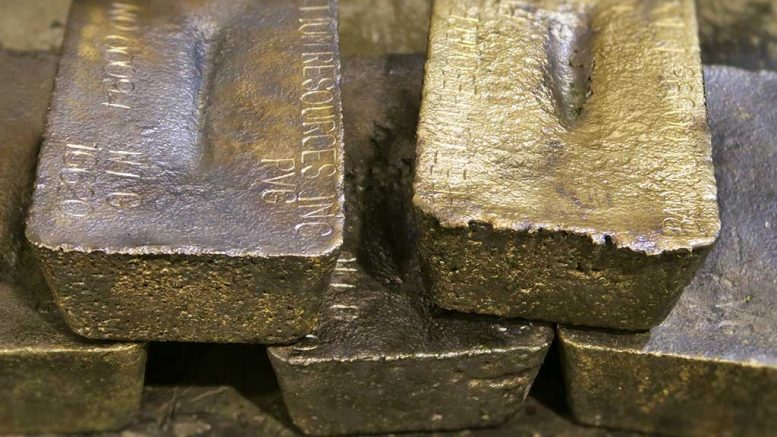The following is an edited summary from the World Gold Council, based on its Gold Demand Trends Full Year and Q4 2018 report. To access the full report, visit www.gold.org.
Global gold demand reached 4,345 tonnes (140 million oz.) in 2018, up 4% on 2017 and in line with five-year average demand of 4,348 tonnes, according to the World Gold Council’s latest Gold Demand Trends report.
The annual increase was driven by a multi-decade high in central bank buying and accelerated investment in bars and coins during the second half of the year. While annual inflows into exchange-traded funds (ETFs) were down 67% in 2018, demand was boosted in the final quarter by inflows of 112.4 tonnes.
Central banks added 651.5 tonnes (20.9 million oz.) to official gold reserves in 2018, up 74% on 2017, and the second-highest yearly total on record. Net purchases jumped to their highest level since the end of U.S. dollar convertibility into gold in 1971, as a greater pool of central banks turned to gold as a diversifier.
Annual jewellery demand was steady at 2,200 tonnes (70.7 million ounces), down just 1 tonne from the previous year. Gains in China (3%), the U.S. (4%) and Russia (9%) broadly offset sharp losses in the Middle East, where demand dropped 15% on 2017. Indian demand was stable at 598 tonnes — a drop of only 4 tonnes from the previous year.
ETFs and similar products saw only moderate inflows of 68.9 tonnes during 2018, down 67% on 2017. Stock market volatility and signs of faltering economic growth in key markets fuelled a recovery in fourth-quarter 2018, with inflows growing to 112.4 tonnes from 32.5 tonnes in the same period last year. However, Europe was the only region to see net growth over the year as a whole.
Retail investment in gold bars and coins grew 4% in 2018 to 1,090 tonnes. Coin demand surged to reach a five-year high of 236.4 tonnes, the second-highest on record. Demand for gold bars held steady at 781.6 tonnes, the fifth year in succession of holding in a firm 780- to 800-tonne range.
2018 saw marginal gains in the volume of gold used in technology — up 1% year-on-year — although this was tempered by a fourth-quarter slowdown. After healthy gains during the first three quarters of 2018, a combination of slowing smartphone sales, the U.S.-China trade war and mounting uncertainty over global economic growth contributed to a 5% decline in the fourth quarter, to 84.1 tonnes.
2018 gold figures
• Overall demand was 4,345 tonnes, up 4% from 2017
• Consumer demand grew 1% to 3,290 tonnes
• Investment demand fell 7% to 1,159 tonnes
• Jewellery demand was flat at 2,200 tonnes
• Central bank demand was 652 tonnes, up 74% from 2017
• Technology demand rose 1% to 335 tonnes
• Total supply was up 1% to 4,490 tonnes
• Recycling increased by 1% to 1,173 tonnes


Be the first to comment on "Facts ‘n’ figures: Central banks buoyed gold demand in 2018"